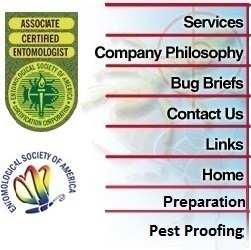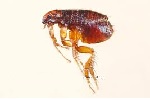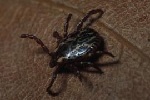
|
 More detail can be found here where much of the information on this page is sourced. |
|
Flea Treatment Fleas have an egg-larva-pupae-adult life cycle. The first two stages can be controlled with a chemical application to the areas they are present. In addition, we use a growth regulator that prevents any larva that escape that chemical from being able to form a pupae or cocoon. The adult fleas are killed at the same time with any of a number of chemicals or even bug bombs anyone can buy at stores. The difficulty with treatment is the cocoons which are impervious to chemicals. Fleas will develop in those cocoons and wait to open up or hatch until they sense movement outside the cocoon and they can stay in those cocoons for a long time if no movement is on the outside. If a residual chemical has been applied to the flooring, it will kill the fleas that emerge but they will go immediately to the source of the movement (you) first before spending any time on the chemically treated surface. The bottom line is, after treatment it is likely to see some fleas hatching from the cocoons for awhile. You can speed this hatching up by vacuuming regularly. For how long or how severe this is and goes on, it is completely dependant on how many fleas are in the cocoon stage, which in most cases is dependant on how long the infestation has gone unaddressed. If it continues for more than 2-3 weeks, it is wise to do some light follow-up to strengthen the residual chemicals. Read Straight Talk |
Missouri Ticks Three species of hard ticks are commonly encountered in Missouri. Most common are the lone star tick and American dog tick. The deer tick, or blacklegged tick, is also common and has legs and upper body that are black.. The Lone star tick females are easily identified by the white dot in the center of the back. Males often have dots or white streaks on the edge of their bodies. The American dog tick gets its name from the fact that adult ticks prefer domestic dogs as hosts, and this tick species is only found in North America. Newly hatched larvae are yellow. Adults are brown. Blood-engorged females are gray. Ticks rarely require treatment inside a house and treatment outside is limited in yards because treatment chemicals degrade quickly outside. The best thing people can do in their yards is to trim overgrown vegetation and keep yards cut. |
|
We are as savvy as an old dog but as eager as a puppy to serve you ! |

